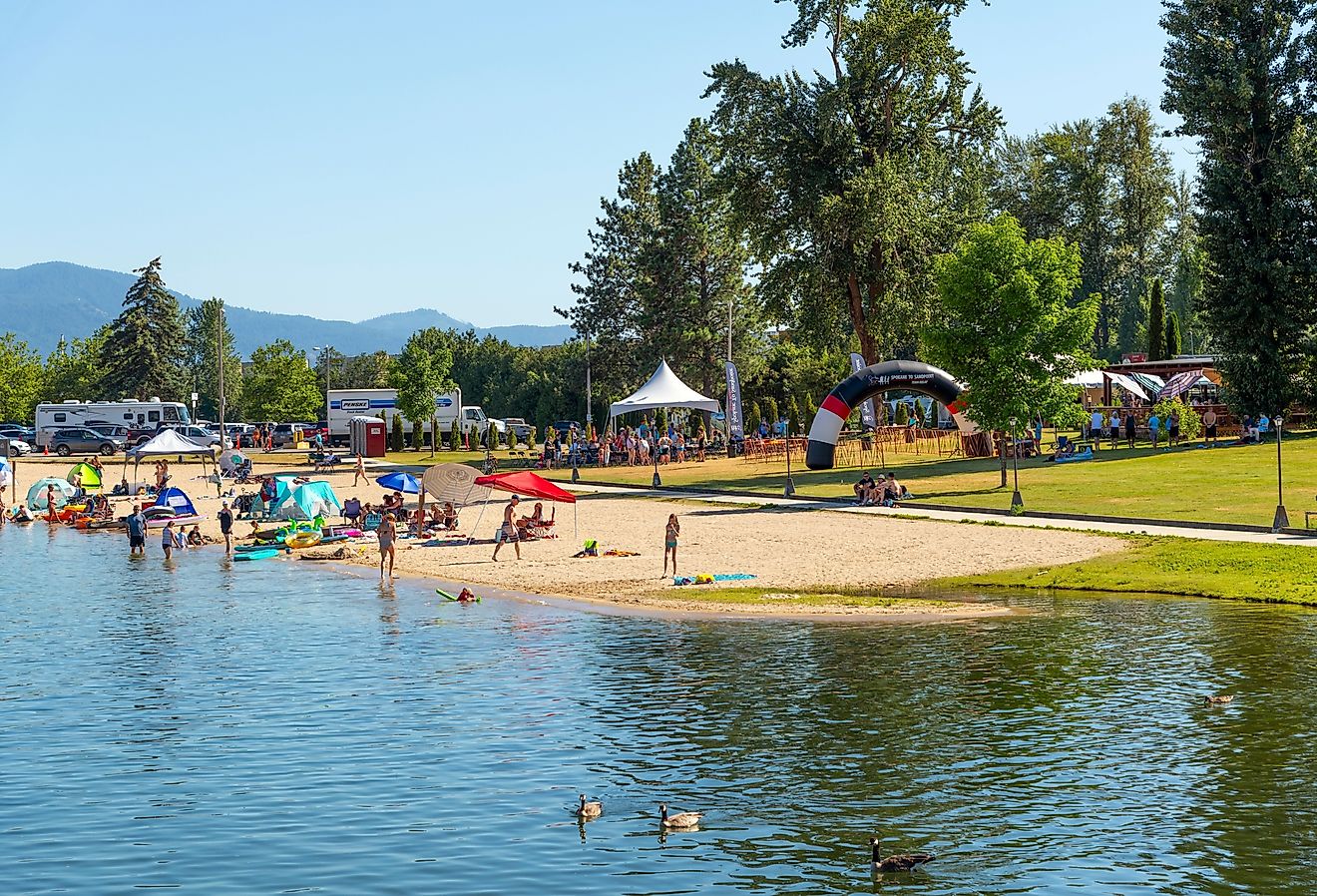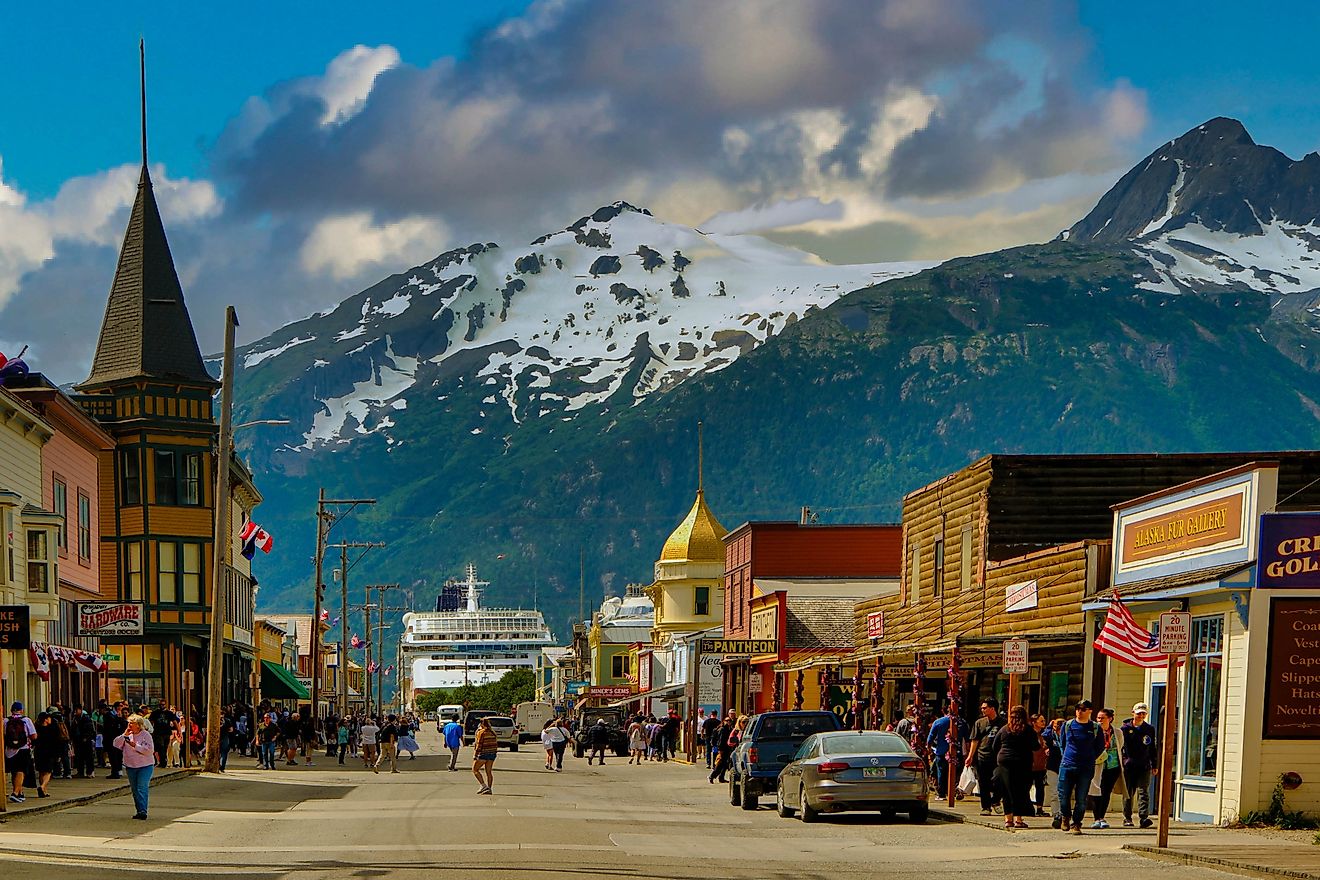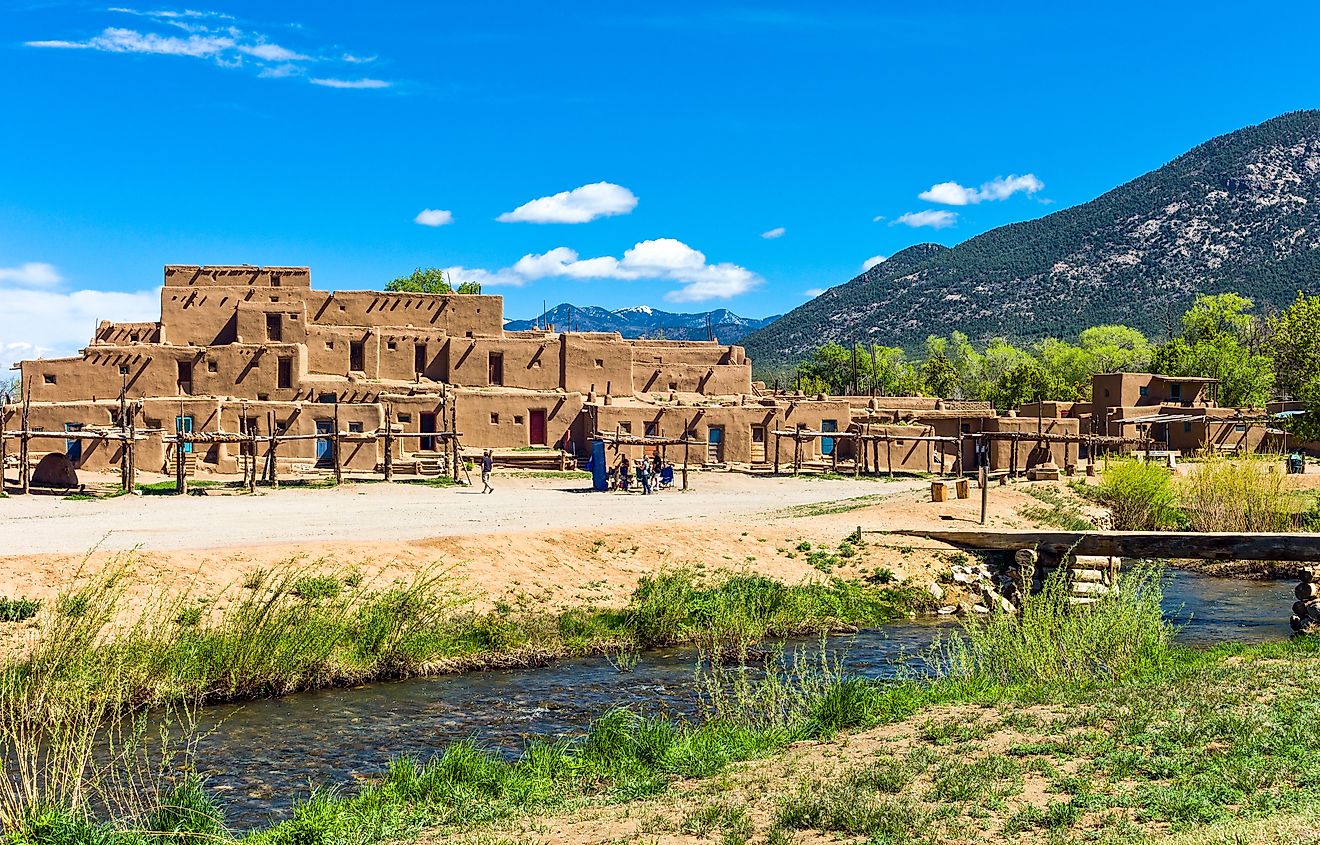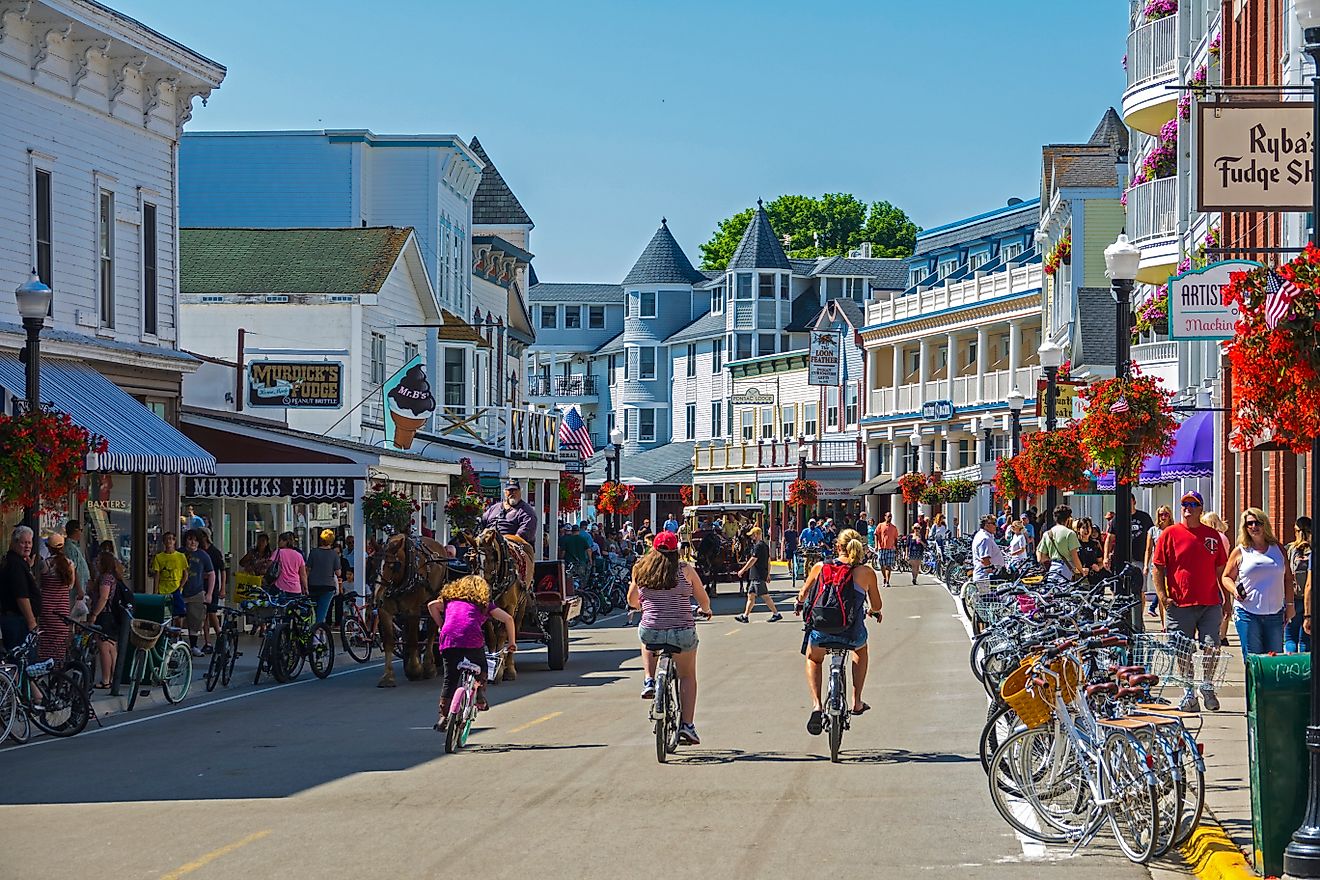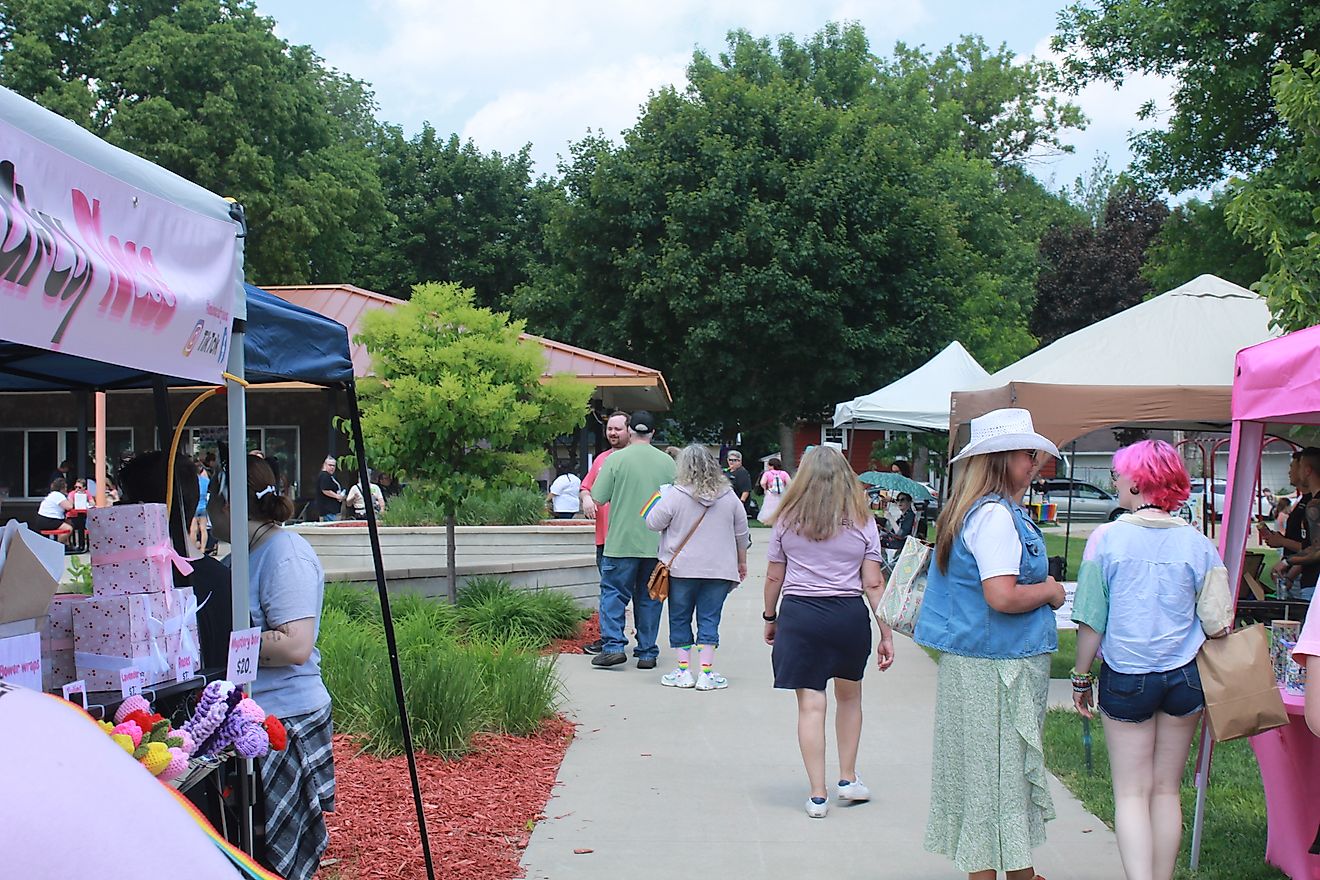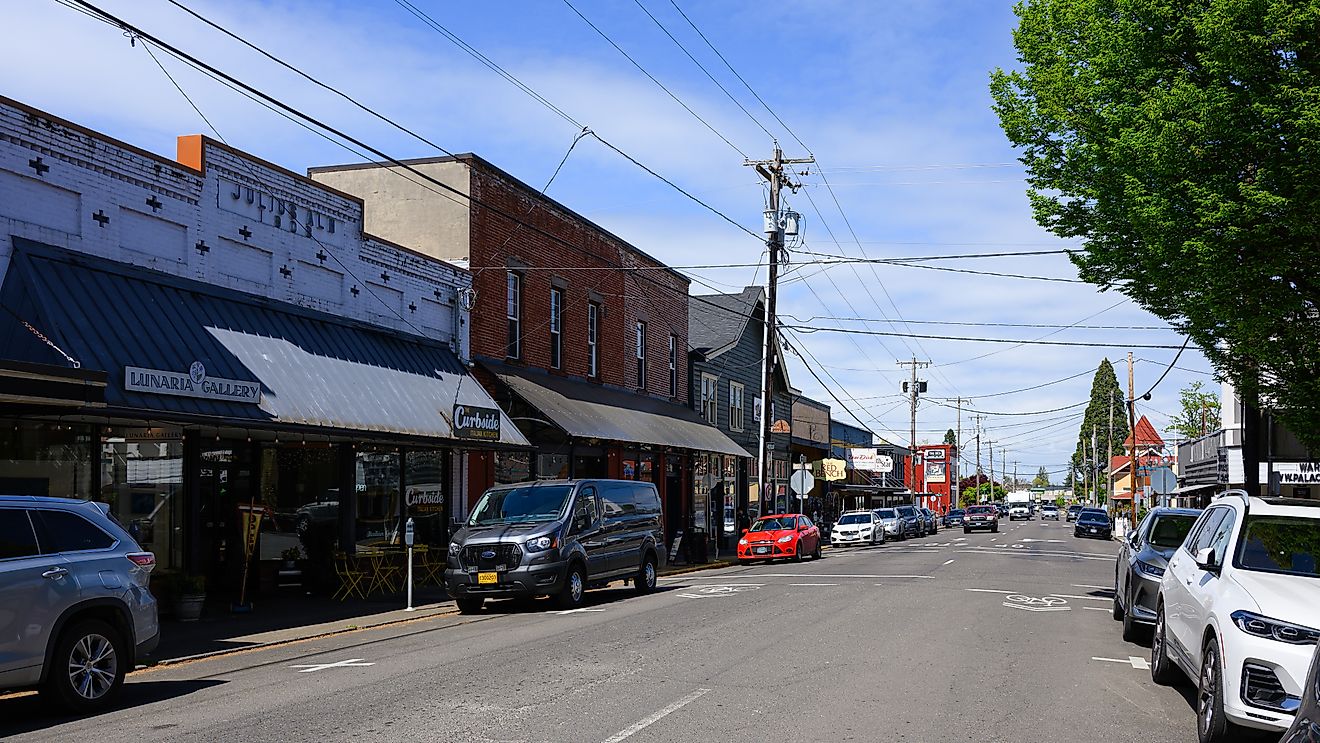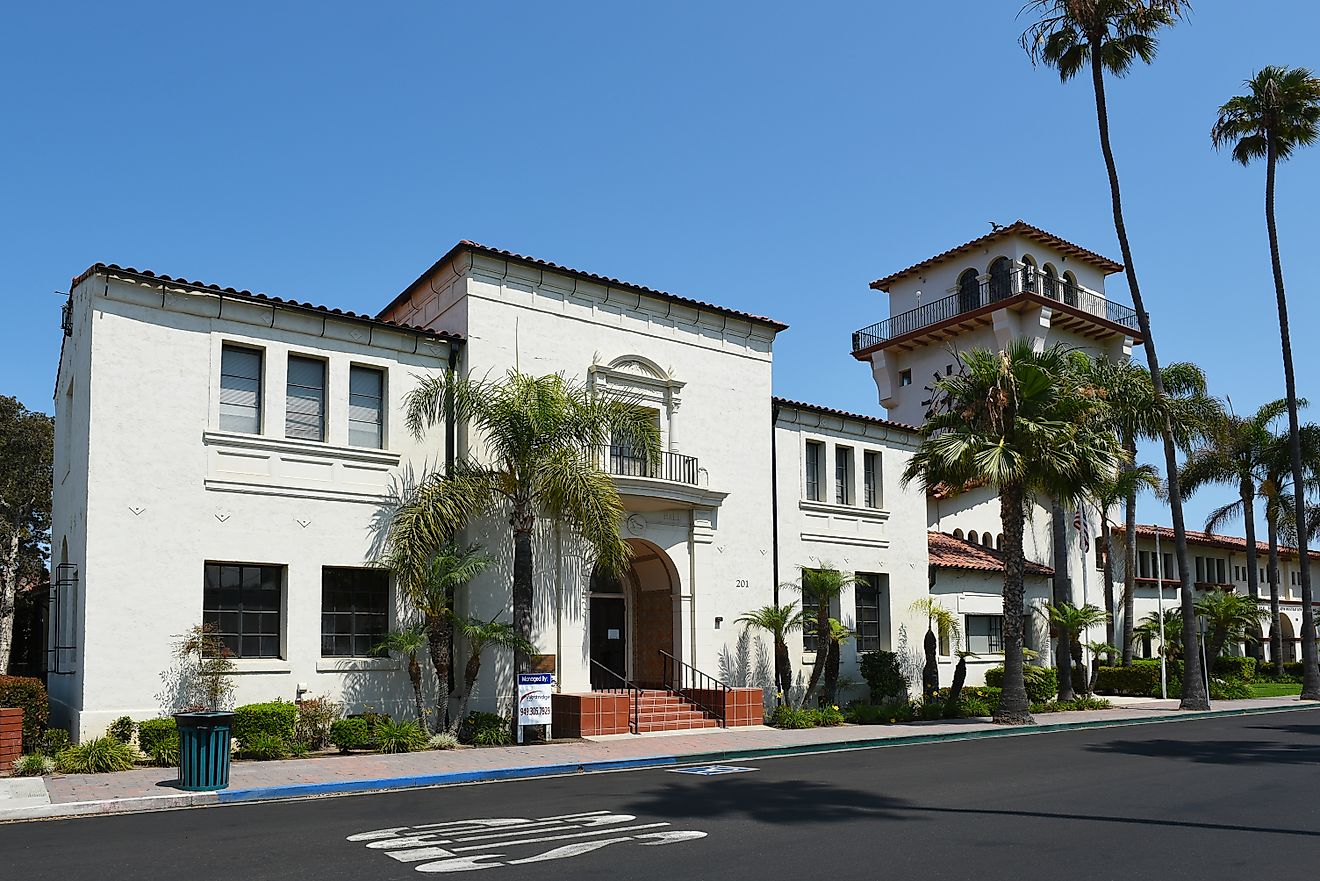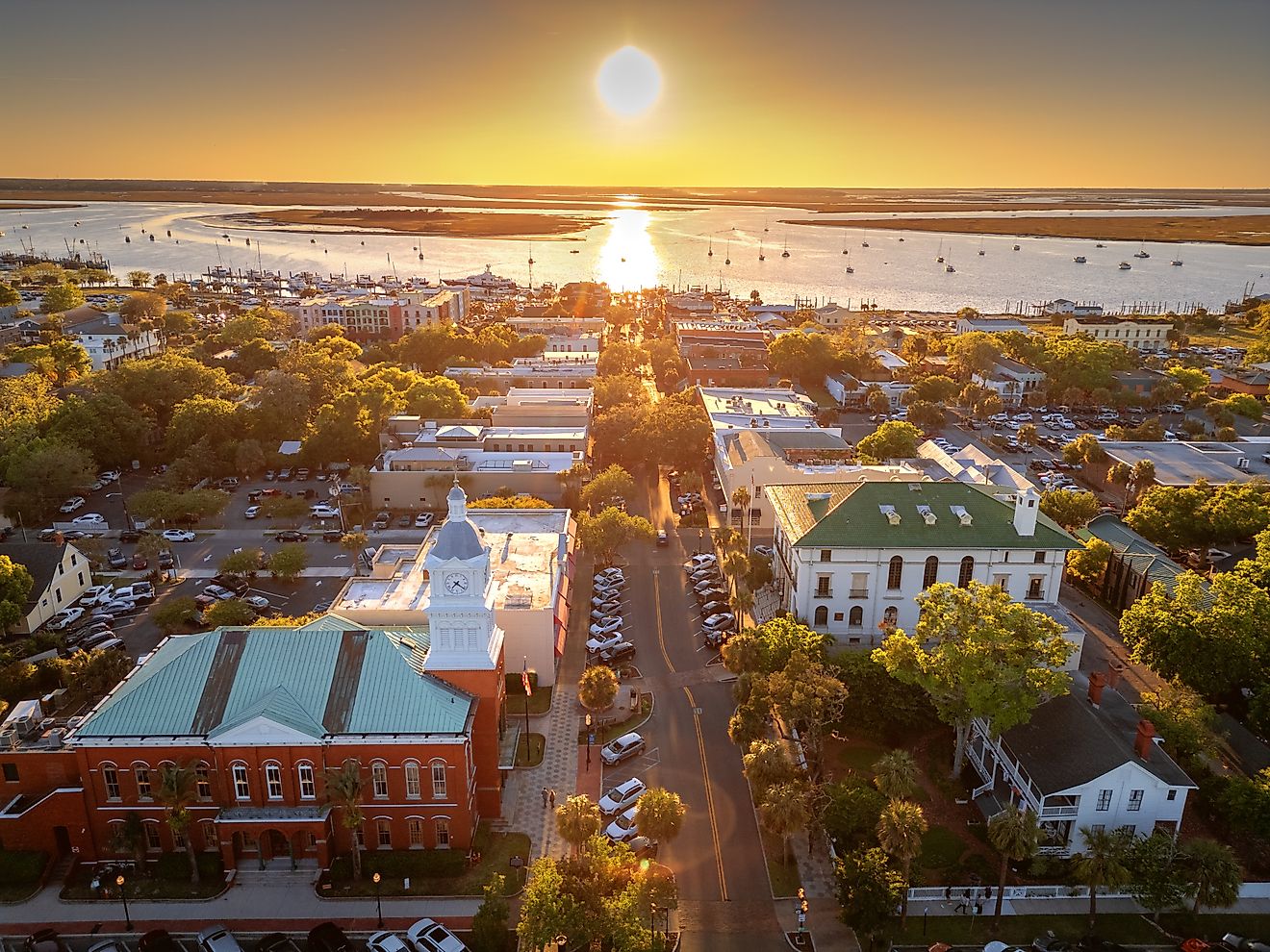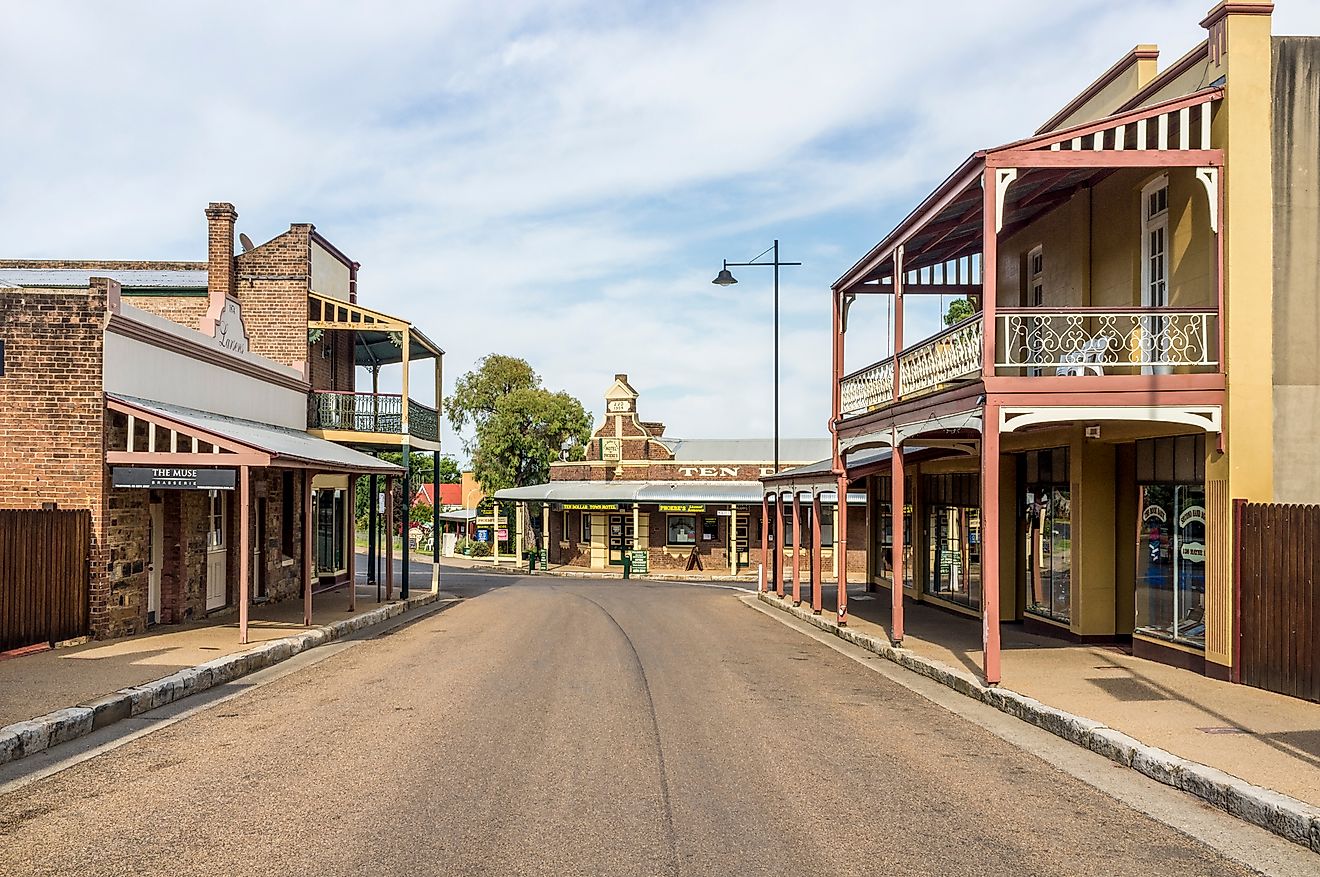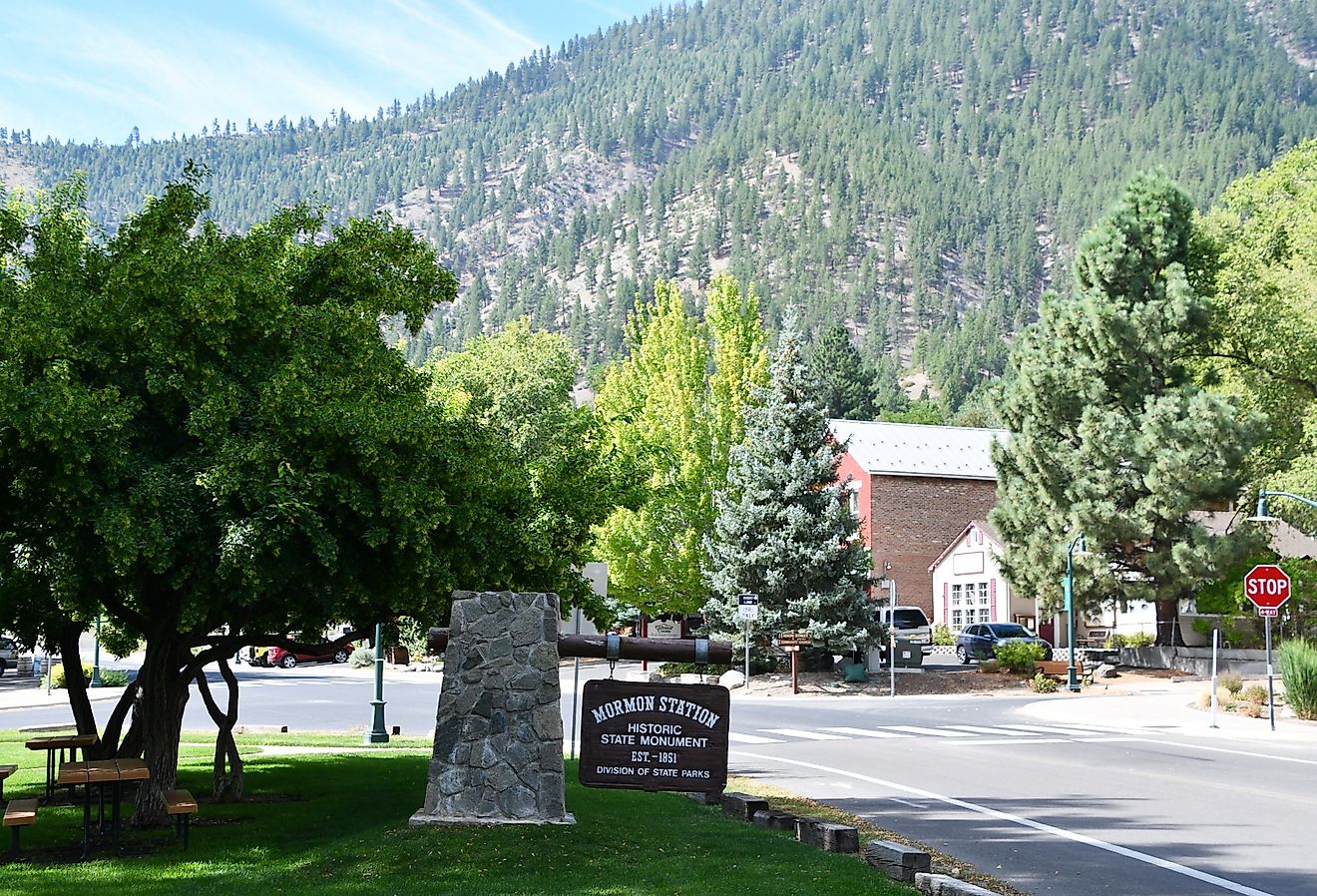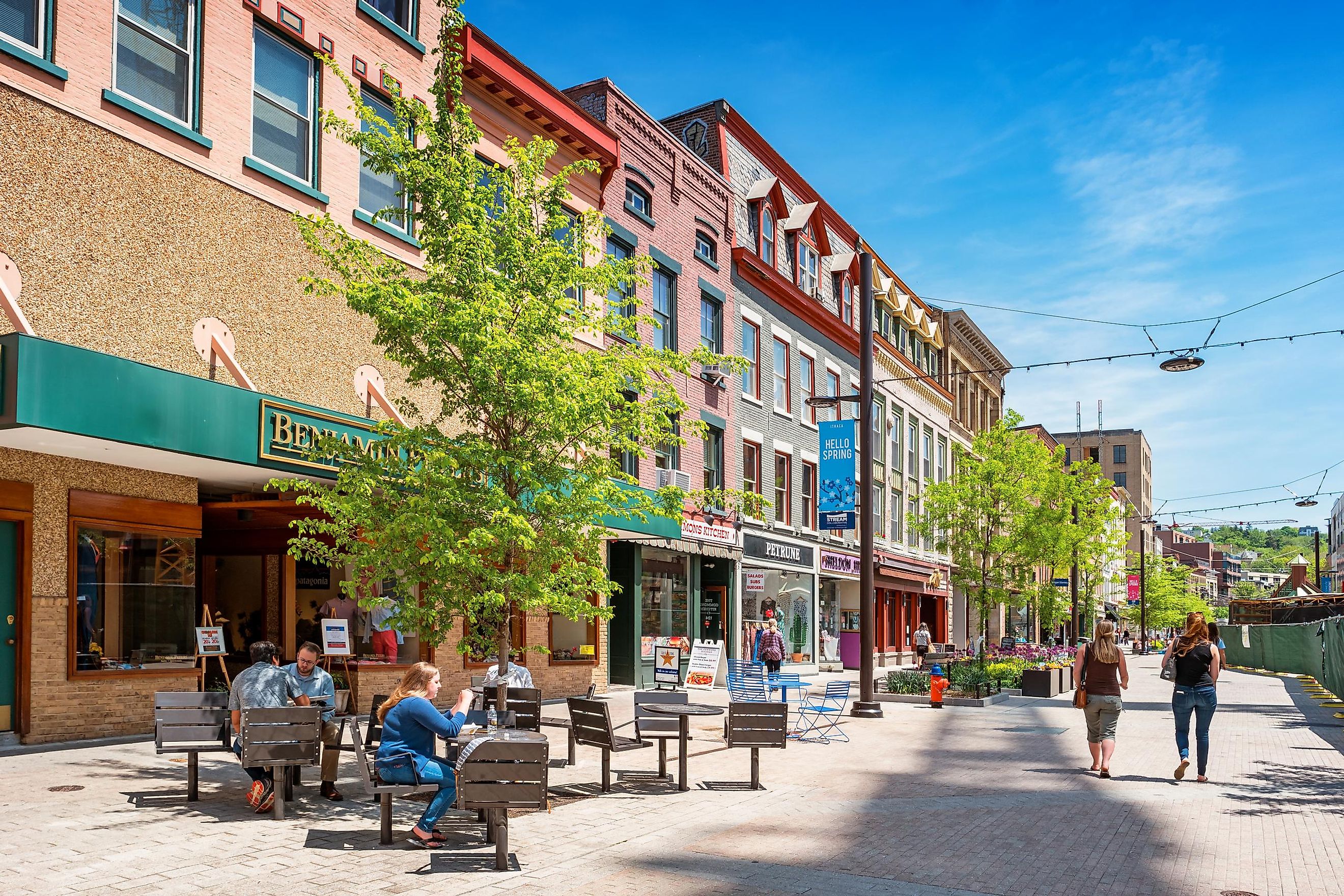
These Small Towns in New York Have the Best Historic Districts
Known for being one of the original 13 colonies, what some do not know about New York, is that this Big Apple state once went by a different name. Named by the Dutch that originally settled in Manhattan Island, New York, it was once called New Amsterdam. It was not until 1664, that New York was given the name we all know and love today.
Something else you may not know about New York is that if you are American, there is a good chance your lineage can be traced (at least in part) to the mass immigration that took place here between 1892 and 1954. Up to 40% of citizens have at least one ancestor amongst the millions of immigrants who passed through Ellis Island during this period. Put into this perspective, it is undeniable (and unsurprising) that the state of New York is brimming with some of the country’s greatest pockets of history.
From its famous historical inventions to its powerful political movements, New York’s impact on the country and world is not only visible within its iconic New York City as some may think. These small New York towns have some of the state’s best historic districts, whether you are looking to explore the birthplace of American feminism or the oldest running tavern in the United States. Even the towns with a quieter history reflect a fascinating part of American culture through their historic architecture, offering an honest reminder of how far the nation has come.
Corning
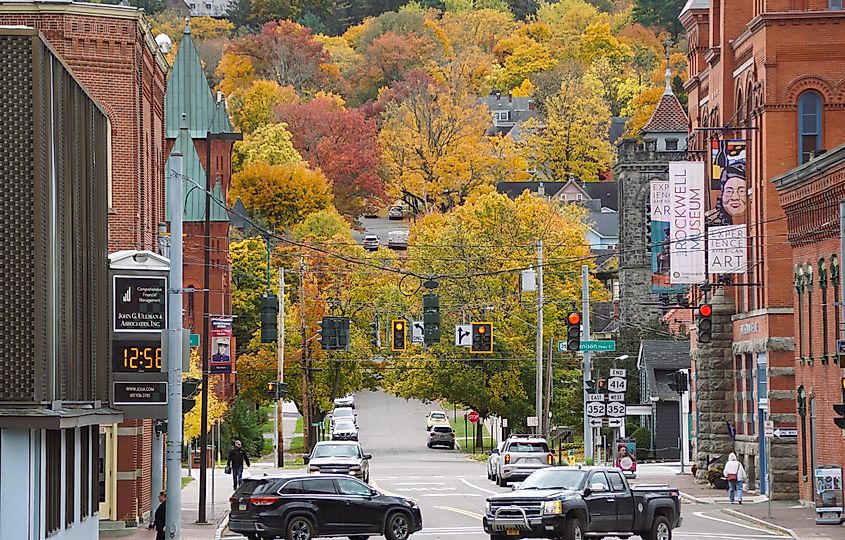
The New York town of Corning has a rich history tied to a unique industry: glass. But Corning is not famous for just any glass. By 1908, the town thrived thanks to their ingenious production of incandescent lamp coverings for Thomas Edison. While mass manufacturing came later on, this was initially a job for skilled glassmiths who crafted them by hand. From then on, the town’s reputation for glass artistry only grew. It was here that PYREX® was invented, and you can even thank Corning for the television set in your living room. By 1947, the town’s innovation produced a cost-effective glass component that allowed the once inaccessible television, to become affordable for the masses.
Visit the Corning Museum of Glass to take in exhibits from as far back as Ancient Egypt, to more contemporary pieces made from artists in town. The museum has been Corning's prized attraction since 1951, and is a testament to the town’s innovation and mastery with the glass medium. Afterward, make your way downtown to Corning’s historic Gaffer District by crossing the Centerway Walking Bridge. The 1921 pedestrian walkway features lawns, gardens, and glass pavers, with the glorious Chemung River flowing to the Susquehanna River below.
The Gaffer District features all the charms of historic downtown, its tree-lined brick sidewalks leading through over 100 boutiques, galleries, and glass studios. 19 historic and prominent architectural sites can also be explored along Market Street, using the town’s “Building’s Alive!” self-guided tour. The Centerway Square Clock Tower is arguably the most famous of the attractions. Built in 1883, it was once a popular watering stop for horses, and today it is a popular photo spot and setting for local festivities.
Cold Spring
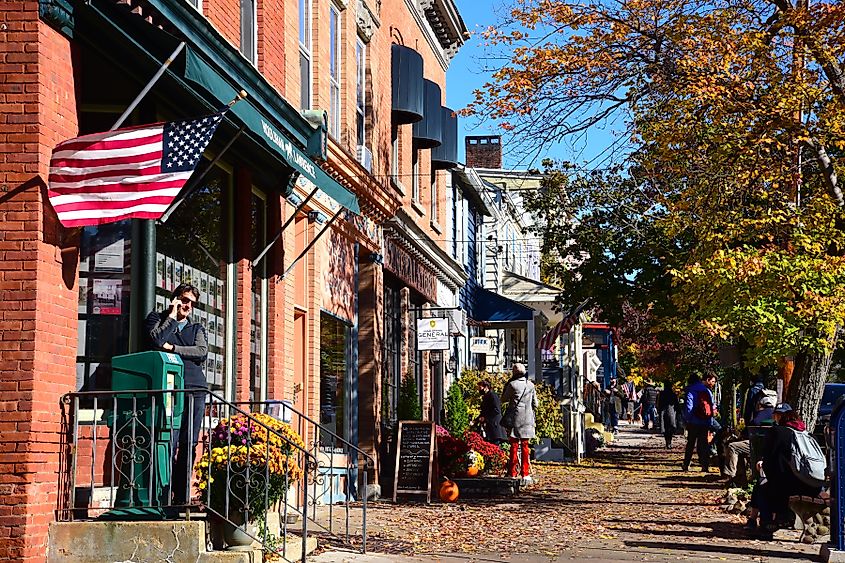
Located around 50 miles from Manhattan, Cold Spring is a popular destination for New Yorkers looking to venture away from the city. Like Corning, Cold Spring is settled on a river–the Hudson–making it a beautiful place to enjoy nature trails, along with the town’s vibrant history. Paths like the mysterious Cornish Estate Trail in Hudson Highlands State Park offer a blend of both, taking you through a gorgeous wooded path to the Cornish Estate ruins. The tall stone remains are a romantic yet tragic reminder of the grand estate that was once the home of Edward Joel Cornish and Selina Bliss Carter Cornish, whose deaths resulted in the magnificent home to be claimed by a fire and, eventually, the forest.
Back in town, the Cold Spring Historic District follows the town’s Main Street, which also offers a blend of nature and history. The riverside park is a great place to sit below the gazebo to behold the Hudson River in all its glory. But a walk down Main Street is where the historic charm shines, a combination of Colonial and Victorian architectural styles dotting the streets. In total, the district features more than 200 historic structures, many of which were built before the Civil War, when Cold Spring’s ironworking and machine shop (the West Point Foundry) inspired rapid population growth. In 1973, Cold Spring’s incredible preservation of history allowed it to be designated a Federal Historic District, and the rest is history.
Seneca Falls
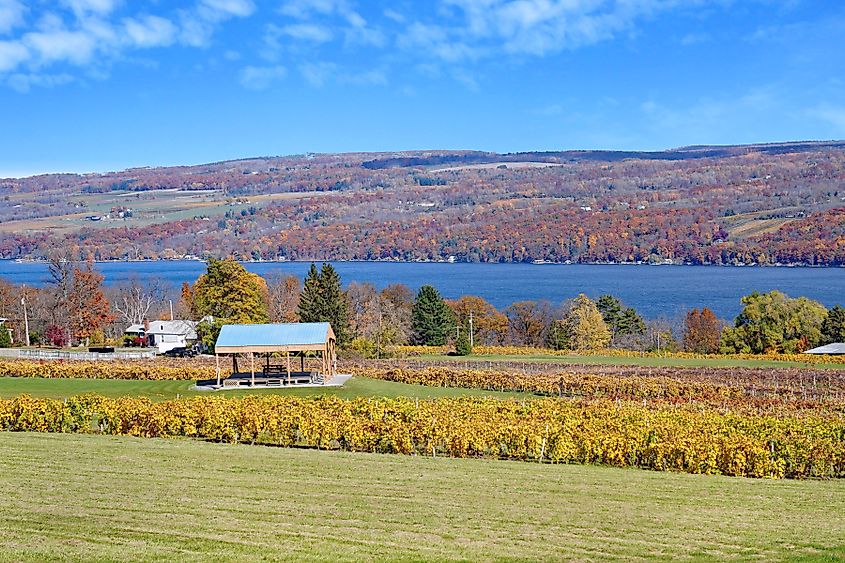
In the northern end of the Finger Lakes Region, Seneca Falls is another New York town with an incredible preservation of its history. Regarded by many as “the birthplace of American feminism,” it was the town’s Wesleyan Chapel where the Seneca Falls Convention (the first women’s rights convention in the United States) took place on July 19th, 1848. Suffragist Elizabeth Cady Stanton gave her speech, “The Declaration of Sentiments,” on this very day, which offered a critique of the inequality at that time.
Today, the church is part of Seneca Falls’ Women’s Rights National Historical Park, which was established in 1982 to commemorate the town’s ties to suffrage. Along with a visitor center, a collection of historic homes, and Stanton’s family farmhouse (nicknamed “The Center of the Rebellion” by Stanton herself), the park stands as one of the town’s most prominent historical features.
To extend your exploration of Seneca Falls’ history, make sure to explore the rest of the Seneca Falls Historic District. Established in 1980, the district currently stretches across 362 acres across 25 streets, with around 50 significant structures. Stroll back in time and take in the Italianate, Romanesque Revival, and Colonial Revival architectural styles, visible within several churches, railroad stations, schools, and the steel bridge believed to have inspired the structure in Frank Capra’s film classic It’s a Wonderful Life.
Ithaca
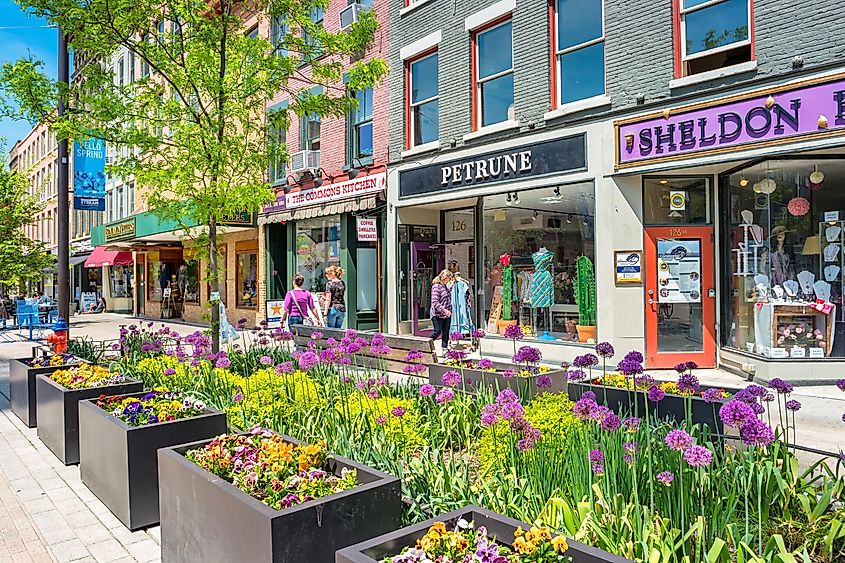
About an hour south of Seneca Falls, the town of Ithaca shares a similar passion for historic preservation through its buildings. The town is home to a total of 7 historic districts, its first being DeWitt Park. The district is named after the town’s founder, Simeon DeWitt, and features 64 buildings with a wealth of architectural styles (ranging from the 1820’s to 1930’s), including some of the town’s oldest surviving residential structures. Keep an eye out for guided walking tours in the area, or discover the architectural treasures on a solo adventure.
Beyond the park area, Ithaca’s Downtown Historic District is arguably even more popular amongst architecture enthusiasts. Classic, multi-level brick buildings are a signature of Ithaca's charming downtown, many decorated with parapets and cornices. The Clinton House (previously an upscale hotel in the 1800’s) is one of the downtown’s most beautiful historic structures, the majestic Greek Revival style reflected in its towering pillars. For a slightly more contemporary stop, view a show at Ithaca’s State Theatre. The 1,600-seat venue was originally built in 1915, and once thrived as a cinema house, admission costing only 50 cents. Today, the theater is one of the most significant live performance venues in the Finger Lakes Region. Plus, with over 100 waterfalls within downtown Ithaca, there is truly an endless amount to see and do in this historic town.
Skaneateles
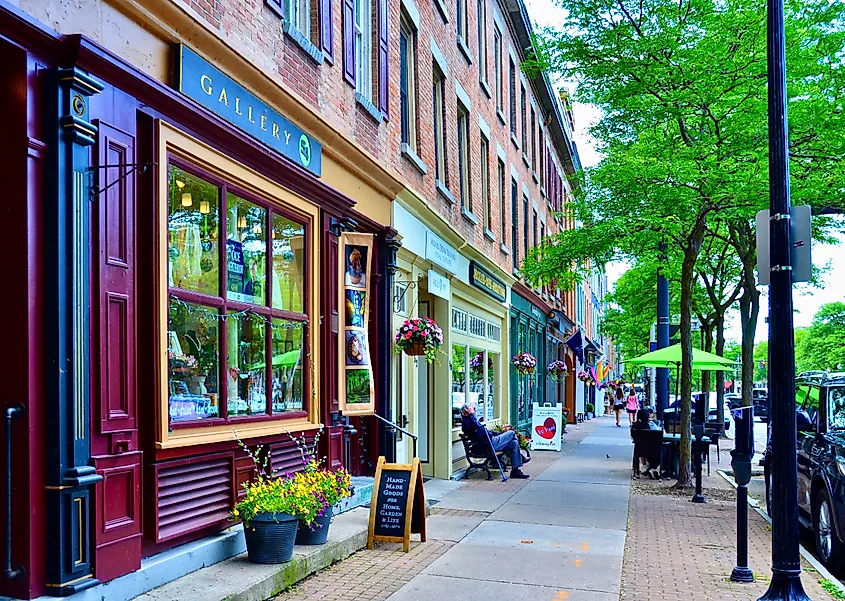
Continuing through the Finger Lakes Region, the village of Skaneateles (pronounced “Skan-ee-AT-les”) features a Downtown Historic District with Gothic, Victorian, and Greek Revival homes and businesses, along with a myriad of historic inns that each tell a story. The village is located right on the shores of Skaneateles Lake after all, and its waters have inspired some fascinating bouts of history. This “Jewel of the Finger Lakes” stretches for 16 miles, and its length is what inspired the Iroquois name “Skaneateles”, which means “Long Lake.” Since the arrival of white settlers in the early 1800’s, the lake has been used as a source of power as well as a central water supply for the towns of Skaneateles and Syracuse since the 1890’s.
If you are hoping to escape to this charming, historic lake town for a weekend or more, ditch the dull chain hotels and opt for one of the town’s dazzling historic inns or bed and breakfasts. The Sherwood Inn is just one example, where–if the walls could talk–they would have a lot to say. The gorgeous Victorian structure was constructed in 1807 and originated as a tavern alongside a stagecoach business until it was purchased and renovated. A wealthy carriage manufacturer named John Packwood added a third floor, two extra wings, and a balcony toward the end of the Civil War. From then on, the inn bounced between owners across various decades, even serving as a temporary hospital during the 1918 influenza epidemic. Today (despite some modern updates) a visit to the Sherwood Inn is like stepping back in time.
Rhinebeck
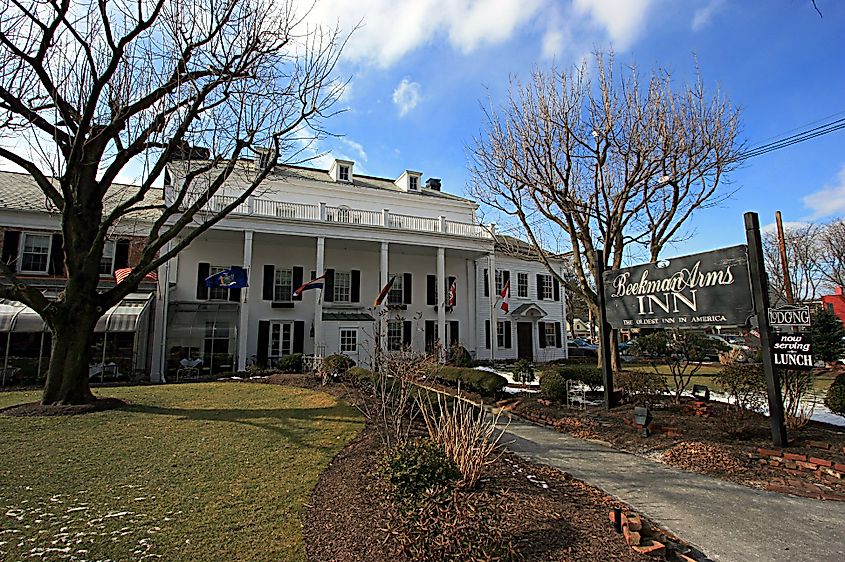
If you adore fascinating structures that tell a story, look no further than the town of Rhinebeck. At the heart of this quaint historic town, you will find the 1.53 square mile Village of Rhinebeck Historic District, or “the Village” as locals fondly call it. The Village is a hive of history, including what is believed, by many, to be the oldest running inn in the United States: Beeman Arm & Delamater Inn. The tavern has been continuously operated since as far back as 1766 and has slept some of the country’s most famous names, ranging from George Washington to Frank Sinatra.
But this is just the cherry on top of the historical charm you will encounter in Rhinebeck. The Village is home to an impressive range of historic homes and buildings, 5 of which are listed on the National Register of Historic Places. The Benner House is the oldest of the sites, the small stone house dating back to the 1730’s when it was built by German immigrant Johannes Benner. With the mighty Catskills Mountains close to town and the grand Hudson River to the west, you will realize why people have continued to travel to Rhinebeck throughout the town’s history.
Saranac Lake
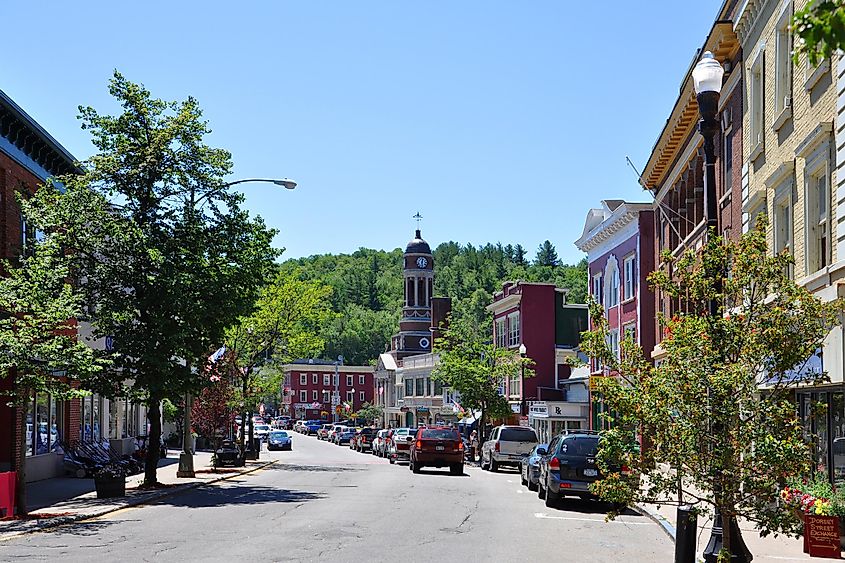
In the Adirondack village of Saranac Lake, you will find the history is as vast and impressive as the three surrounding sections of the lake it is named for. The village was originally settled back in 1819, although the undeveloped land looked a bit different back then. Jacob Smith Moody (a farmer and trapper) was not only Saranac Lake’s first settler but the first permanent settler in the region. From there on, the village progressed, transforming to a health resort town and research center. You can learn more about the village’s history as a tuberculosis treatment center at the Saranac Laboratory Museum in downtown Saranac. It was here, in 1894, that the very first tuberculosis laboratory was built in the United States.
Downtown Saranac Lake itself is truly a sight to behold, with the scenic Saranac River flowing through the area and connecting each of the three aforementioned lake sections. But if more history beckons you, Hotel Saranac is one of the most significant structures in the village. It was originally constructed in the roaring 1920’s as a way to resuscitate the downtown, and its impacts can still be felt today. If you are hoping to explore Lake Saranac’s various historic districts (including Berkeley Square, Church Street, Cottage Row, and Highland Park Historic districts), you may just want to book a night or two in this slice of Saranac Lake history.
Warrensburg
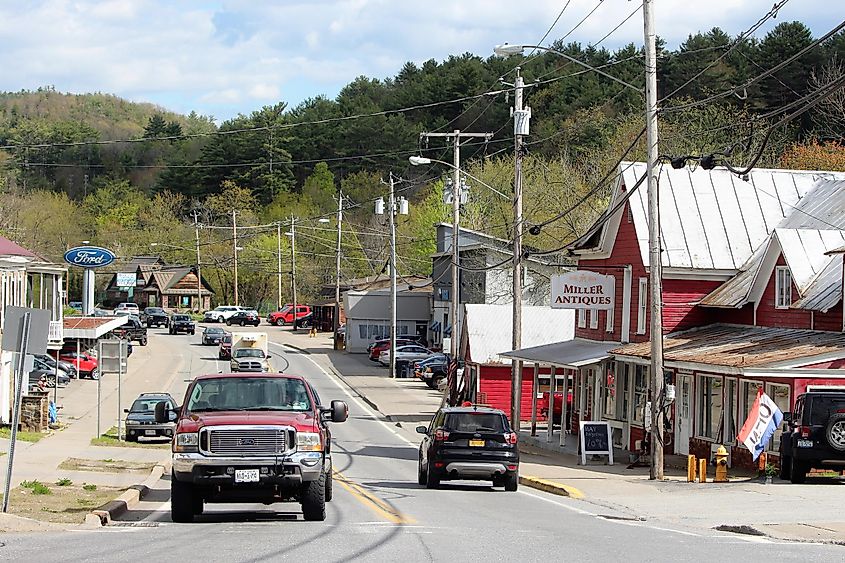
Last but certainly not least, Warrensburg is another quaint Adirondack town whose historic district features a breathtaking walk-back-in-time. Although the Warrensburg history is a quieter one, it is nonetheless worth appreciating. The town was officially founded in 1813, and its community and economy was immediately centered around the waterway they’d settled along the Schroon River. With the convenient proximity to the waterway and surrounding forestry, the town’s paper-making, sawmilling, and cloth-making industries prospered well into the 20th century. The Warrensburg Museum of Local History is a free museum that celebrates this fascinating past, as well as the Adirondack region’s equally significant history.
Beyond the museum, the Hamlet of Warrensburg Historic District stretches across several properties and celebrates the area’s mosaic of historic structures. Explore the area on a self-guided walking tour to take in the district’s fusion of residential, industrial, and religious architecture, its styles spanning the last 150 years. On River Street, you can even spot the foundations of the town’s oldest historic mills at Warrensburg Historic Mills Park, where the town hosts its local farmer’s market in a quaint blend of past and present Warrensburg.
Whether viewing a live show at Ithaca’s historic cinema house, exploring the tragic ruins of a manor in Cold Spring, or touring Ithaca’s wealth of historic architecture on a scenic stroll, New York’s small towns have something any history enthusiast would appreciate. While these historic districts share some similarities in their building styles and museum attractions, no two districts are truly the same, just as no town’s history is the same. To truly appreciate the lasting impact of New York, visit any of these small towns to walk back in time and see how those before us paved the way.
